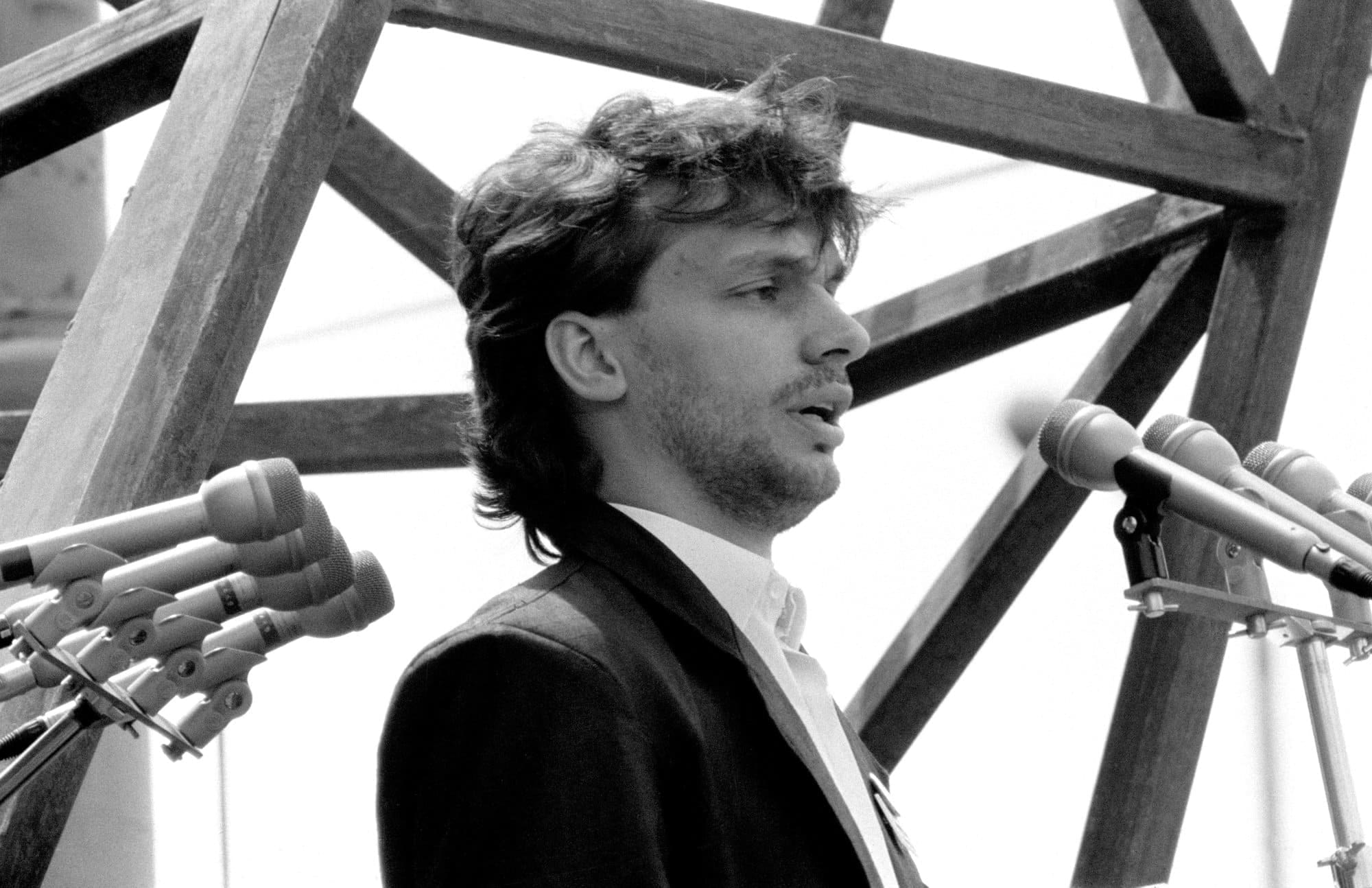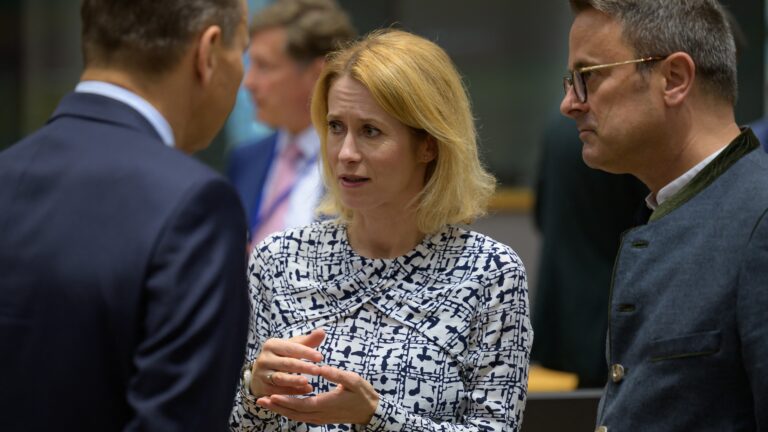Today there are two problems gnawing at Europe, or rather at the working mechanism of the European Union. The political elites of the Western countries do not see eye to eye with the central parts of the continent on the principles of organizing geographical space and of how society operates, or more precisely, on the scope of powers of action to be retained by nation states and on the significance of traditional attachments. As the repositories of the present establishment of the EU, the former camp seeks to force its agenda on the latter through practices perceived in Central Europe as being not only antidemocratic but downright colonialist. The leaders of the Central European countries, which won their independence three decades ago, thus call for a reformation of the institutions of the EU by turning over (in fact returning) the right to make common decisions to the governments of the nation states, as long as they possess democratic legitimacy. By contrast, the ramping up of the influence exerted by Union bodies without accountability, by abstract mechanisms and groups without a proper mandate, is being pushed by the elites of states (aided by the transnational euro-bureaucracy loyal to them) that have a track record of imperial ambitions and a vision of the future to match.
Fault lines of the European Union
The series of discussions named the Conference on the Future of Europe, concerned more precisely with the much- needed and impending reform of the EU in terms of its basic arrangements of architecture, is characteristic in more ways than one
Firstly, the organizers chose to launch the conference on Europe Day on 9 May—which commemorates the submission of the Schuman Declaration and is just one day after the date marking the end of the Second World War in Europe—when they could have chosen the date of, say, 9 November, the day the Berlin Wall came down, for its significance as a symbol of European unity and solidarity. Secondly, the announcement of the conference happened to coincide with an offensive launched by the progressivist forces of Europe which in and of itself eloquently demonstrates the disagreement between the conservative administrations, mostly of Central Europe and spearheaded by Viktor Orbán, and the reigning elites, mostly of the West and the North (whether liberal, green, socialist, or even ‘right-wing’). The bone of contention is of course the scope of federal versus national powers of discretion, for instance with respect to enshrining the meaning of ‘family’ in a member state’s constitution, or of the right to regulate sexual education.
No less symbolically, Viktor Orbán picked 19 June 2021 as the date for his contribution to the ongoing debate. On that very day, Hungary celebrated the thirtieth anniversary of the withdrawal of Soviet troops from the country. The prime minister concluded his speech by referring to the ongoing construction of a Brussels-centric empire. ‘We know the true extent of the threat as we have only been free for thirty years’, he said. ‘We have always been Europe’s freedom fighters. We fought for freedom, while our Western friends inherited it. What a difference!’ It is a great difference indeed, one that calls for humility from the West and responsibility from the East.
The two problems I indicated at the beginning have common roots in the vastly different thinking about regions and politics between the two camps. Following two decades of Westernization after 1989, the western and central parts of Europe began to drift apart and then to diverge, not without historical precedent (colonization and missing out on it, empire building versus wars of independence, two sides of the Iron Curtain, EU founders versus newcomers to the Union). The continent, brought together within the EU in the aftermath of the Cold War, both broadened and deepened its reach from the Maastricht Treaty to the wave of ‘eastern enlargement’ (2004, 2007, and 2013), executed with more than a hint of a neo-orientalizing attitude. In spite or perhaps because of these developments, the EU has proved unable to manage the series of crises that began to afflict the world less than a decade and a half ago, including the economic meltdown (2008), the migration crisis (2015), Brexit (2016–2020), and the coronavirus pandemic (2020–2021).
These fiascos revealed and even intensified several other problems, both geographical and political in nature, such as the dissimilarmonetary and fiscal policies demanded by the northern and southern parts of Europe, or the striking cultural discord between the western and eastern halves of the continent regarding notions of national identity, ethnocultural solidarity, gender issues, and the role of Christianity.
Clearly not free from the accelerating impetus of the events mentioned above, the fault lines between the member states since the 2010s seem to have been settling in on a stress zone stretching somewhere between the northwestern and central parts of the continent. The process is accompanied by geopolitical shifting caused by Great Britain’s secession from the Union and the failure to this day to implement even the most rudimentary first chapter of enlargement in the Western Balkans (namely Serbia), to say nothing about the integration of the other countries of the region (Albania, North Macedonia, Bosnia- Herzegovina, and Montenegro.) Meanwhile, the French–German axis is no longer being defied by Italy alone in its habitual, subtle ways. The Visegrád Group, recently eyed by Slovenia as well, are now resisting the fiscal, juristocratic, and cultural pressure from the Union in a far better organized and more overt manner. All of this goes to show that what László Németh called the ‘seismic map of Europe’ is being redrawn as we speak.
The two halves of Europe—more correctly, the Western core states and the countries of Central Europe that have acceded to the EU since the turn of the century, with Hungary occupying the region’s geographical and political fulcrum—stand for two different models. On the one hand, the Western trend, which can be regarded as the mainstream, has been gradually loosening its local ties for the past few decades and thus requires less and less democratic legitimation, advocating instead fluid group identities, open, multicultural societies, and federal discretionary powers—in short, the vision of a United States of Europe. On the other hand, we have the countries born or reborn from the overhaul of political systems in Eastern and Central Europe in 1989. After two decades of giving up step by step much of their newly won sovereignty and emulating the Western example, these countries have finally taken their own path, pursuing the goal of national sovereignty and of broadening the scope and vindication of popular sovereignty—in short, the vision of an alliance of independent and autonomous European nations.
Indeed, the territorial principle is inseparable from the principle of democracy, but the two cannot be simultaneously upheld except within the borders of a nation state. As Frank Füredi suggests in his Why Borders Matter (2020), the idea that citizenship must be stripped of its territorial specificity and national sovereignty weakened presents a clear and direct threat to democratic public affairs. This corroborates the view that the two models imply different concepts of the state based on different social philosophies. Exactly 100 years ago, Ortega y Gasset formulated the problem by proposing that one can be very liberal and not at all democratic and vice versa. While the Western European mainstream seeks to end the marriage of liberalism and democracy that has survived since 1945 by widowing the former, the Central European proposal is to simply dissolve that marriage as one that has seemed unnatural since its inception in the nineteenth century, for the sake of democracy entering an alliance with the nation instead.
Reform or progress?
Contravening the originally conceived mission of the Union at its foundation, the spirit of the fundamental treaties, and even the constitutional provisions of member states, the resignation of sovereignty and the affirmation of centralization efforts in the name of an even closer union not only dissolve territorial jurisdictions but transgress the democratic principle by delegating discretionary powers to Brussels and Strasbourg, triggering a crisis of operation and legitimacy. One camp wants to carry on with and even accelerate this process, urging further progress, whereas the other camp is determined to halt it or, better yet, reverse it to return to the original principles. (The level of federation originally contemplated by the ‘founding fathers’ in the 1950s remains a matter of debate, but it is an incontrovertible fact that, unlike a simple economic union, the political-legal standardization which has been in progress for some time has never been mandated by anyone.) The overall political picture is one of progressive forces desiring ‘strides of empire building’ (Miklós Szánthó), aided by furtive legislation and some ‘normative imperialism’ (Frank Füredi) thrown in for good measure, pitted against the efforts of nationally minded democratic forces to regain the sovereignty of nation states with the ultimate goal of a common European destiny shared by independent nations.
The EU is in trouble, both by global standards and in comparison to its major global competitors (China and the USA), and certainly in light of the indicators cited by Viktor Orbán in his address: GDP, industrial added value, global financial market share, innovation, and defence spending. In fact, to quote the prime minister again (and this assertion would be difficult to refute): ‘Today the EU is where it was thirty years ago.’ In other words, Brussels’s standardization drive has failed to bring more strength, performance, and development to the European Union. On the contrary, what we are seeing today is a Brussels empire enfeebled in its diplomacy and military striking force, steeped in economic stagnation, unable to rise to the challenge of twenty-first-century technology, and bewildered by uncertainty, yet strangely bossy and patronizing in its actions and manners. These contradictions have recently become particularly embarrassing when the EU interfered with the internal affairs of a China labelled a ‘vaccine superpower’ even as it failed to organize vaccine supplies and distribution on a standard Union-wide level, let alone to earn merit in supporting the autonomy ambitions of national minorities within the territory of the Union.
It is imperative to turn the EU around in the dead-end-street of progress, and to make it revise its mode of operation to embrace its own roots while modernizing itself
This will take genuine reform, hopefully leading to a rebirth, a sort of European Renaissance. It is to further such a programme that Hungary’s prime minister submitted in his seven theses. These theses are as follows: 1) Democrats standing on a national basis are up against the empire builders who are, in actual fact, also opponents of democracy; 2) the former seek to defend traditional communities (family, people, nation, and region) while the latter want to overwrite them, because they ‘see integration not as a means, but as a goal, a goal for its own sake’; 3) the excessive centralized powers that Brussels enjoys without a mandate are aggravated by its outsourcing of briefing duties to entities without legitimacy and accountability (American influence, multinational corporate interests, and Soros-funded NGOs); 4) while antagonizing its member states, the imperial centre is incapable of showing any economic achievements to its name; 5) ‘[T]he next decade will be a period of dangerous challenges: mass migration, epidemics, and pandemics.’ Under the circumstances, the Union should not focus on centralization but on the effective protection of its member states, which inevitably necessitates the restoration of democracy, the safeguarding of national identities, and the protection of internal constitutional order, if need be by creating a new body with oversight of these functions to which members would be delegated by the constitutional courts of the member states; 6) the European Parliament is in need of reform, preferably by having member states delegate members from their own elected ranks; 7) finally, it is imperative to continue enlargement, first by admittingSerbia to the Union.
A European system overhaul
Ortega y Gasset described Europe as the only continent that has a content. It is therefore hardly surprising that its transformation at any time will be accompanied by ceaseless discussion, debate, and even culture wars. However, its ancient Greek, Roman, and Judeo-Christian legacy remains a sign of its ability to renew itself by its own resources vested in tradition, and after going through its own renaissances, reformations, counter- reformations, and enlightenments, showing a face that will resemble its original features at birth. Yet for the past few decades, the EU, investing itself with the unearned authority to represent the entirety of Europe, has strayed onto an imperial path hitherto known only to what Carl Schmitt called ‘space-alien powers’ (raumfremde Mächte) such as the United States (the unification of member states) or the Soviet Union (centralized discretionary powers).
As the third decade of the twenty-first century begins, and living as we do in a ‘world without a world order’ (Mária Schmidt), we need a structural reform and cultural rebirth of the EU more urgently than ever, if only because that Union has gathered the significant majority of European countries in its fold. In this effort, we shall be aided by the recognition of the fact that national forces stand for democracy while international forces tend to be antidemocratic. If you prioritize the nation, you are a democrat, and vice versa.
Translated by Péter Balikó Lengyel








